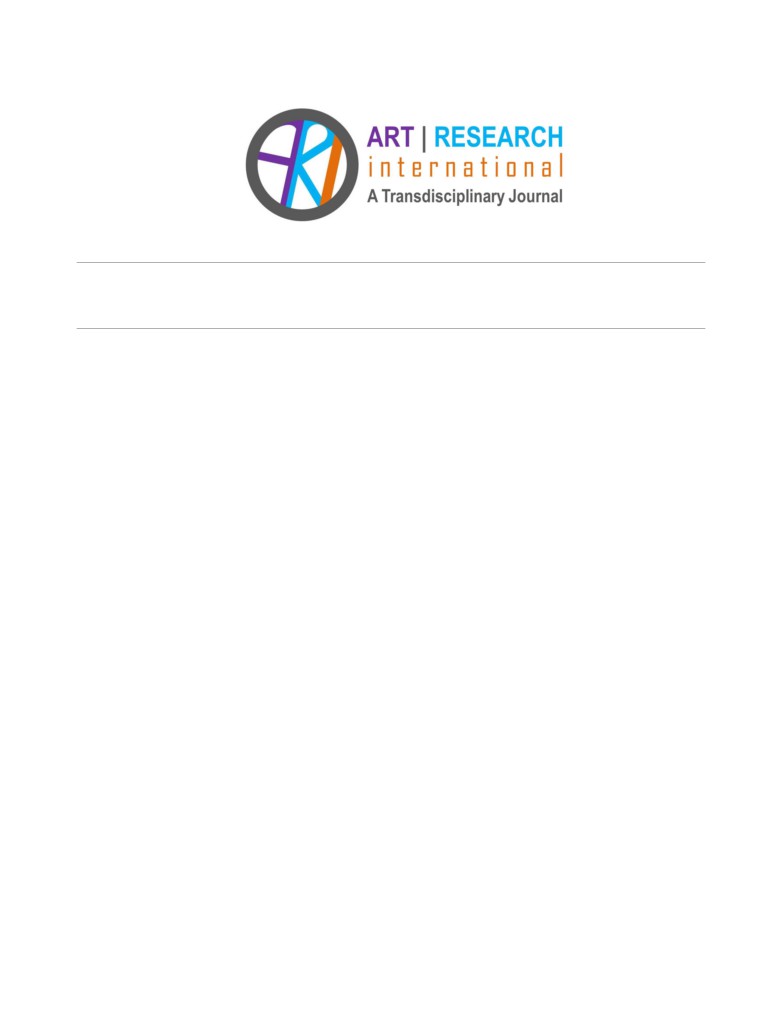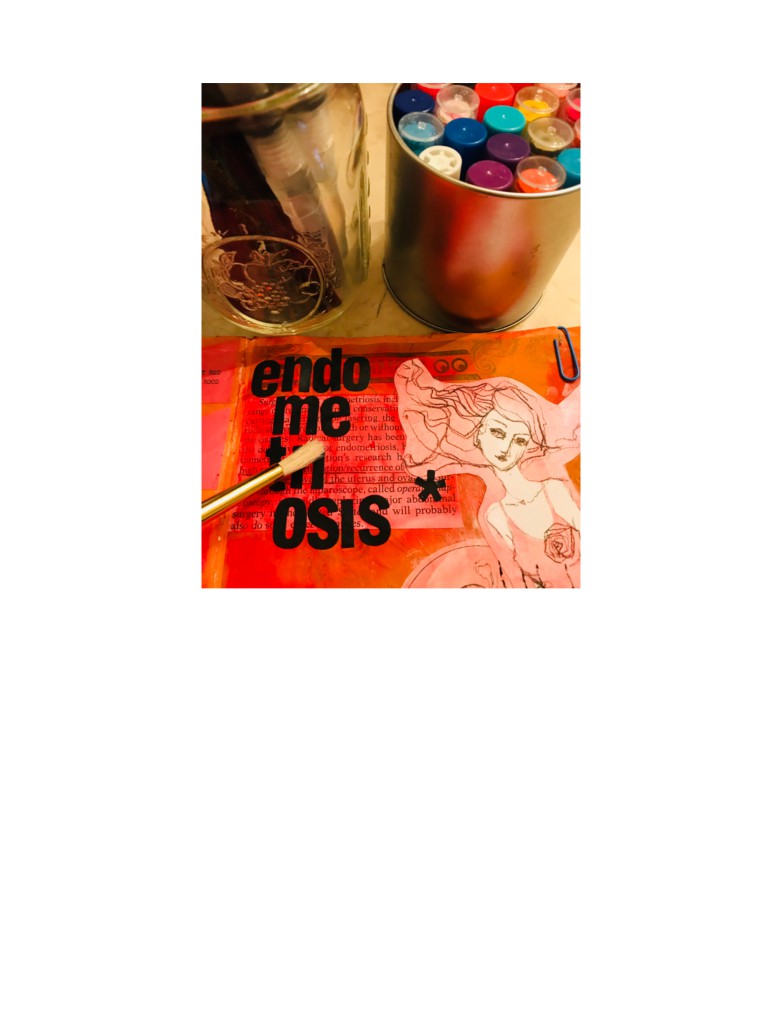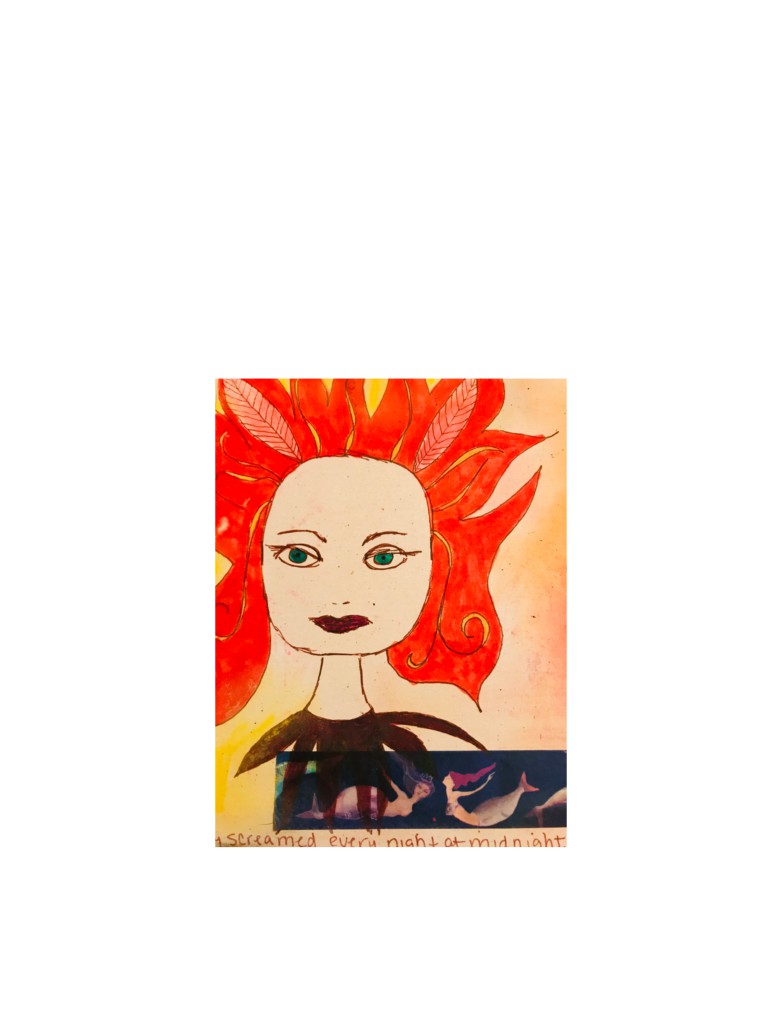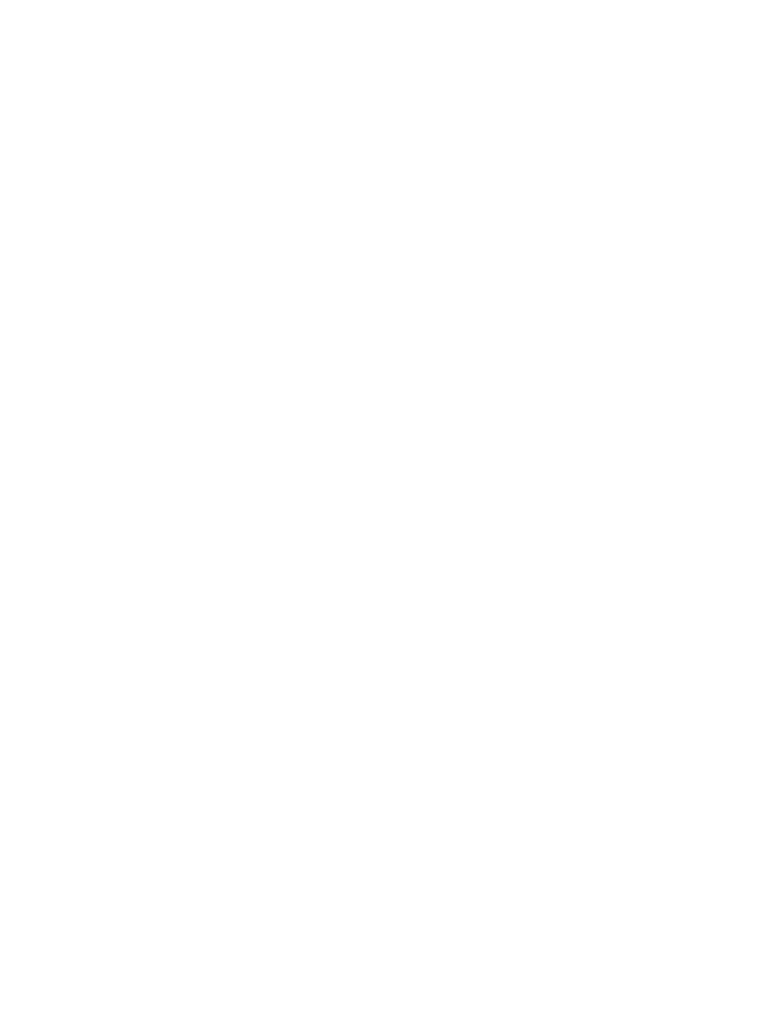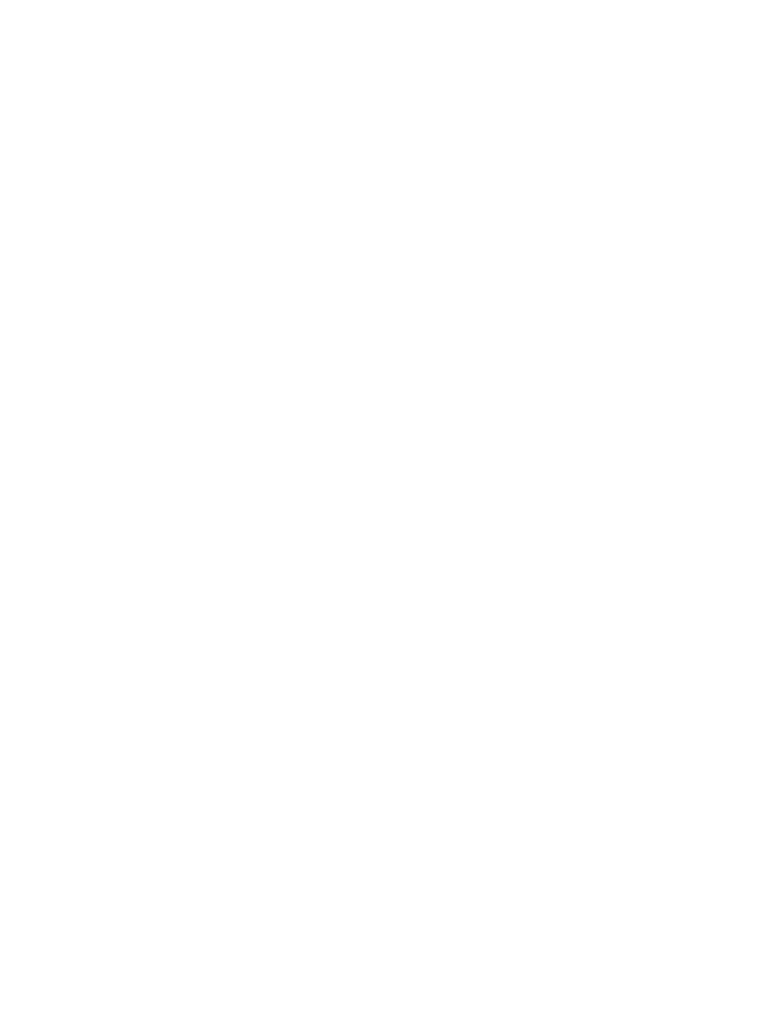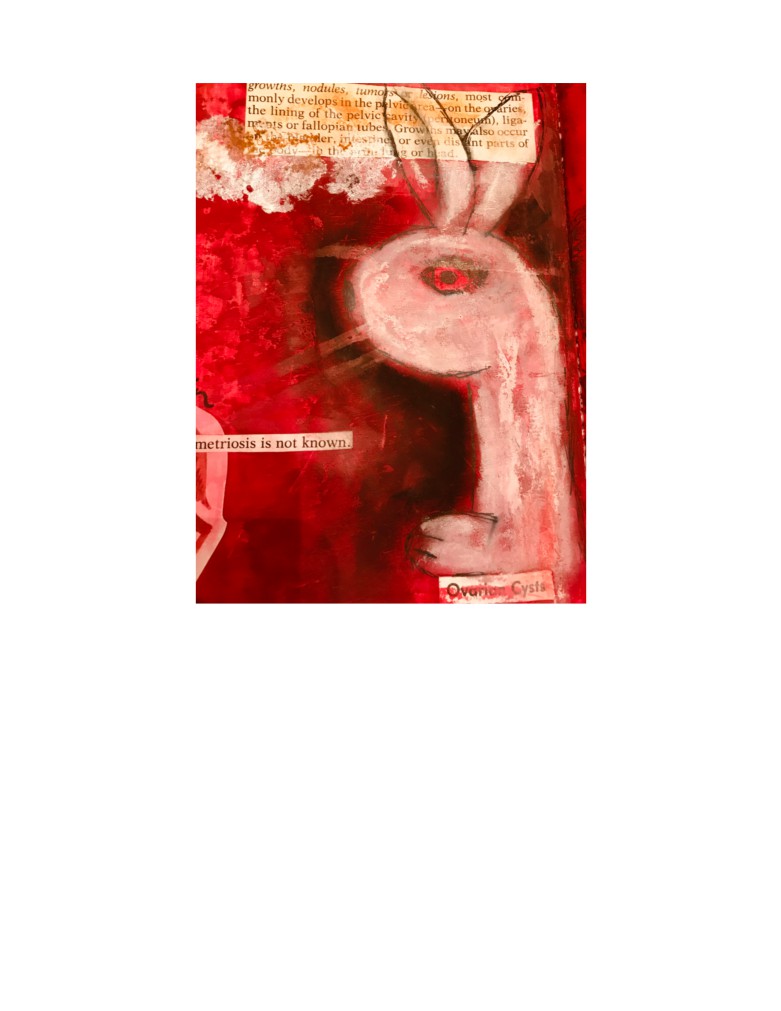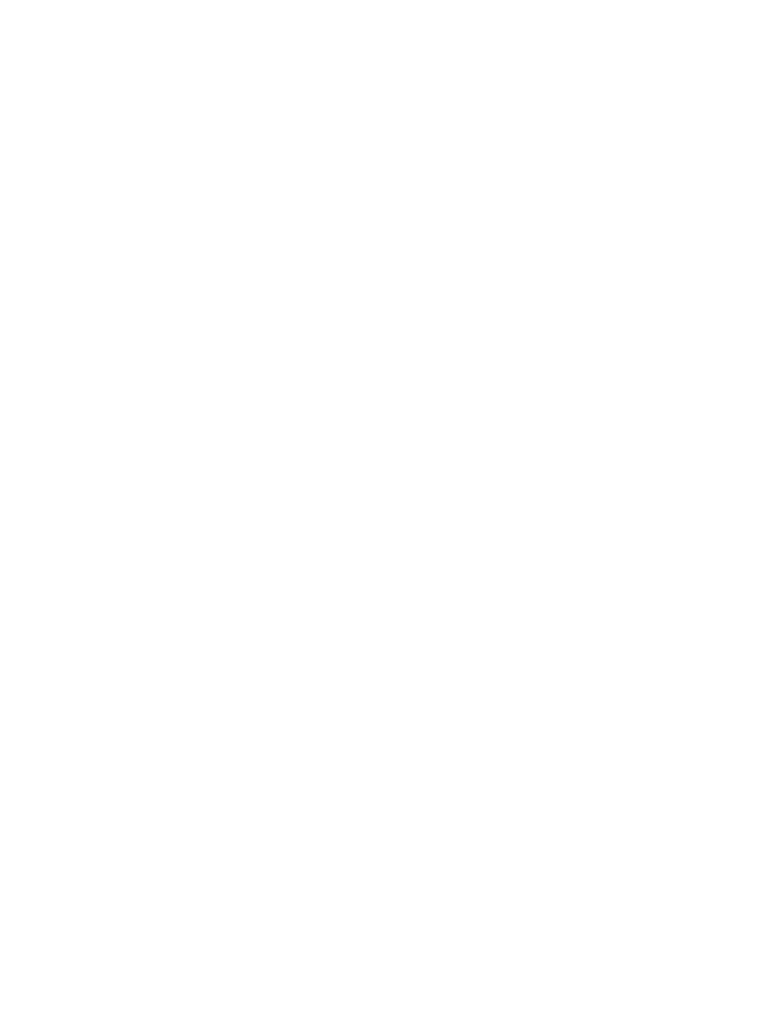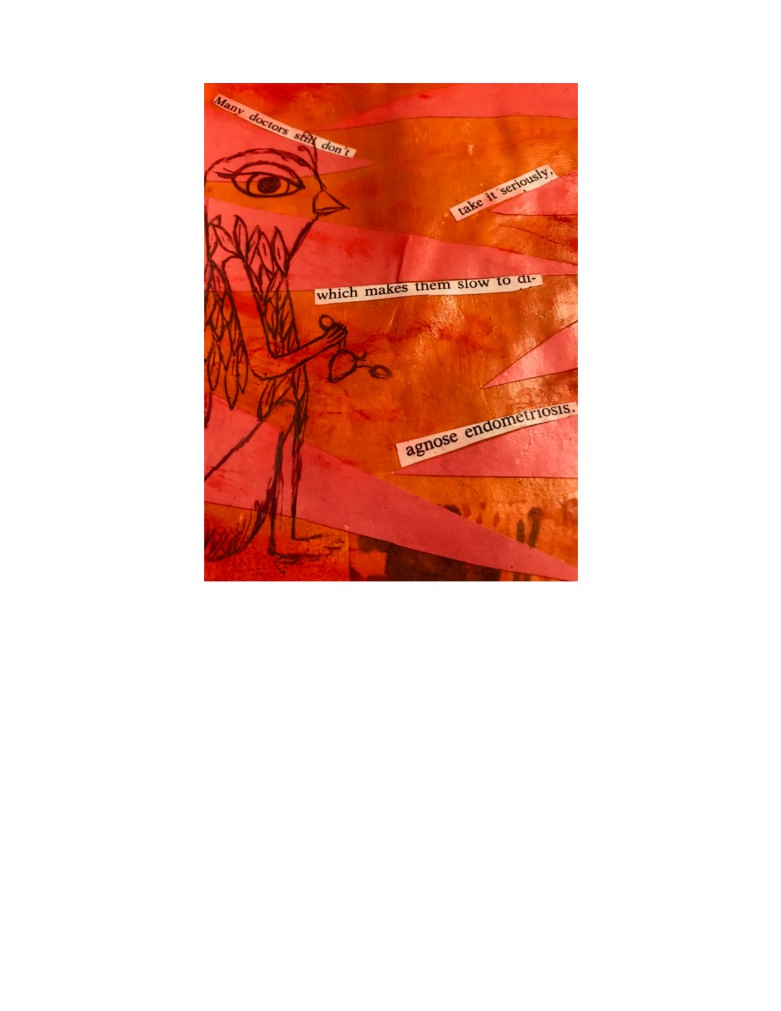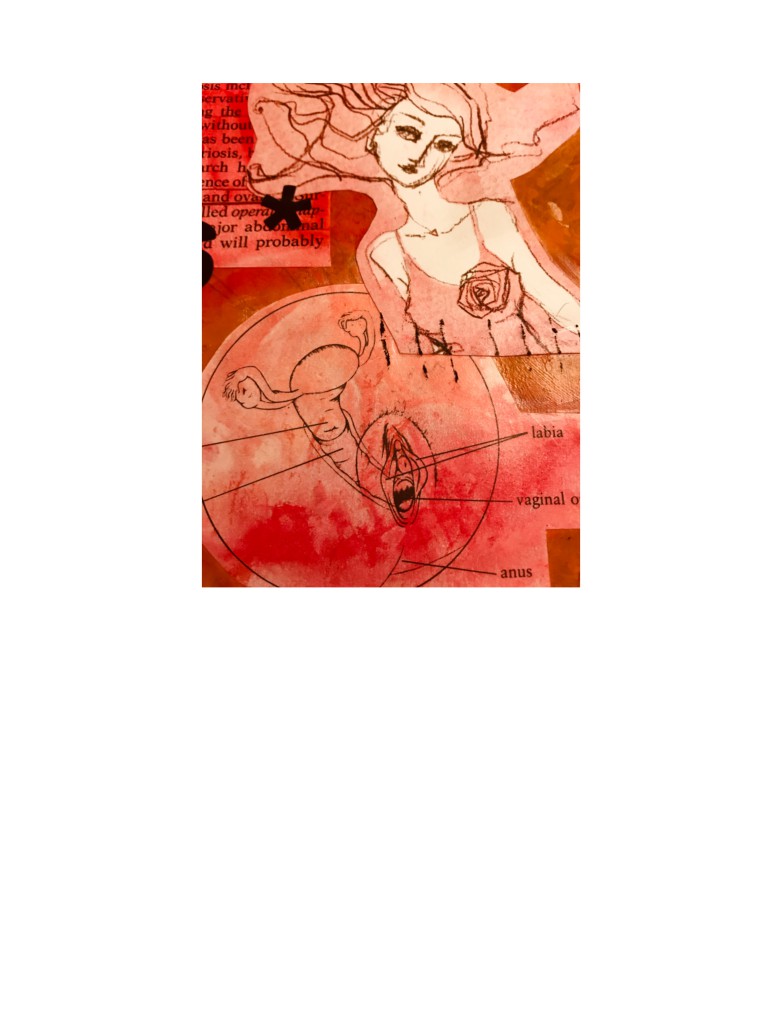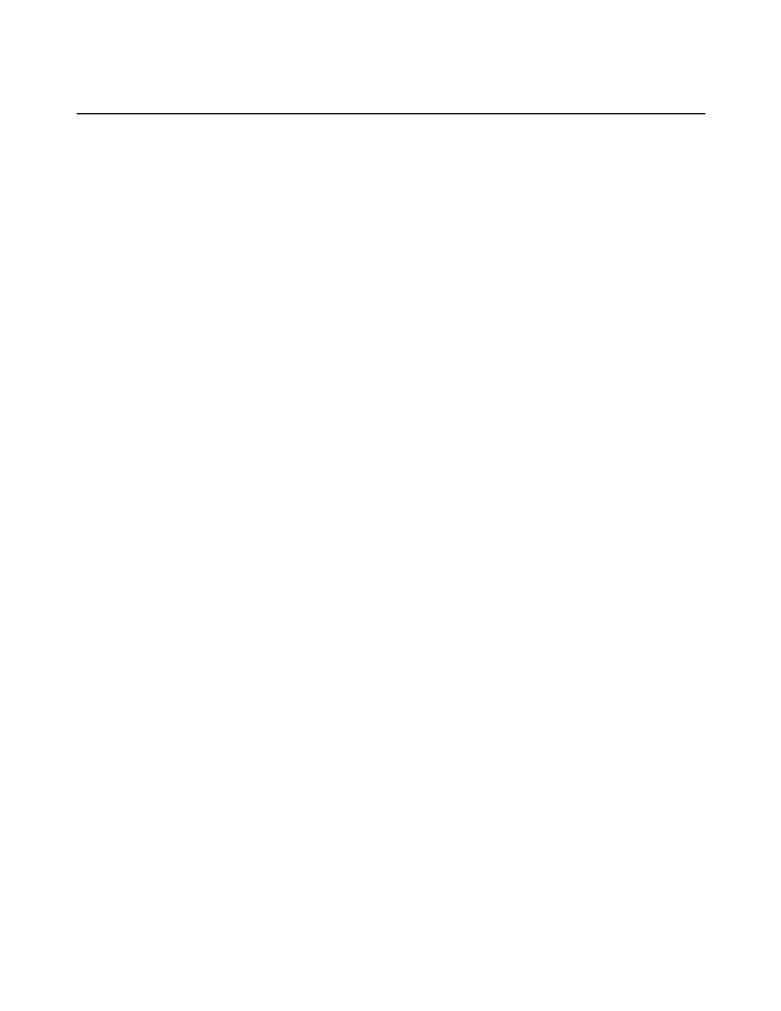Art/Research International: A Transdisciplinary Journal
Volume 4 Issue 1, 2019
PATHOLOGY: A DIFFRACTIVE ENCOUNTER OF
MACHINE/BODY
Jessica Smartt Gullion
Texas Woman’s University
Jessica Smartt Gullion, PhD, is Associate Professor of Sociology and Associate Dean for
Research for the College of Arts and Sciences at Texas Woman’s University. She is the
author of more than thirty peer reviewed journal articles and book chapters, appearing in
outlets such as Qualitative Inquiry, the International Review of Qualitative Research, and the
Journal of Applied Social Science. Her latest books include Diffractive Ethnography and
Writing Ethnography.
Abstract: I’ve been thinking about poems and about college as rhizomes (Deleuze and
Guattari 1987), and as diffractive techniques (Barad 2007; Gullion 2018) for thinking about
the social world. This project emerged as a way for me to understand my embodied
experience of abdominal surgery. I began with the creation of an art journal, and then wrote
a poem to accompany the images. I created the images and the text while thinking about my
experience of undergoing surgery and diffracting that through Haraway’s (2016) ideas about
cybernetics and machine bodies.
Keywords: diffraction; poetic inquiry; art journaling; rhizomes; surgery; endometriosis
Pathology
312
Art/Research International: A Transdisciplinary Journal
Volume 4 Issue 1, 2019
Figure 1.
I’ve been thinking about poems and about college as rhizomes (Deleuze and Guattari
1987), and as diffractive techniques (Barad 2007; Gullion 2018) for thinking about the social
world. This project emerged as a way for me to understand my embodied experience of
abdominal surgery. I began with the creation of an art journal, and then wrote a poem to
accompany the images. I created the images and the text while thinking about my
experience of undergoing surgery and diffracting that through Haraway’s (2016) ideas about
cybernetics and machine bodies.
Art journaling is a material discursive interface, a mixed-media project that combines
visual elements with text. Painted pages are fixed with ephemera - patterned papers,
photographs, images and text cut from magazines and other printed materials (I used a
1990s edition of Our Bodies Ourselves in this journal), memorabilia, inks, rubber stamps,
markers, special pens, pastels, chalk - anything that can be used to make a mark (Gullion
and Cooksey 2013:120). The book itself may have begun as a blank book, a handmade
Pathology
313
Art/Research International: A Transdisciplinary Journal
Volume 4 Issue 1, 2019
book, or an altered book repurposed for art journaling. Writing is typically integrated into the
visual elements of the pages; although a page may have no words, allowing the visual
elements to do the expressing. In this journal, I used a variety of techniques and mediums,
and I incorporated found objects associated with the event of my surgery.
Barad (2007:91) writes that,
making knowledge is not simply about making facts but about making worlds, or
rather, it is about making specific worldly configurations - not in the sense of making
them up [ex nihilism or] out of language, beliefs, or ideas, but in the sense of
materially engaging as part of the world in giving it specific material form.
To diffract, we make something new.
Figure 2.
Pathology
314
Art/Research International: A Transdisciplinary Journal
Volume 4 Issue 1, 2019
The concept of diffraction comes from physics and has been adopted in feminist
theory as a means for describing that ways in which objects and ideas interfere with each
other in a process of creation. My goal in creating this text and these visuals was not to tell
the story of my surgery (although it will in some ways) and it was not to make meaning out of
the experience (although you could use it to do so).
When waves crash into each other through a barrier, new patterns are created. This
is the basic understanding of diffraction. There is an inter/ruption, and what emerges is not
more of the same. In diffracting, we are not reflecting a reality but creating one.
I chose to focus on three moments in the poem, echoing a 2014 paper by Barad
called Diffracting Diffraction. These moments, “like all moments [are themselves] a diffracted
condensation, a threading through of an infinity of moments-places-matterings, a
superposition/entanglement, never closed, never finished” (169).
November 10, 2016
My body, naked
In a cold, bright, white room.
On a metal table,
Unconscious.
A stretchy, white strap secures the smooth endotracheal
tube that descends down my throat. A whirring machine pushes
oxygen into my lungs, sucks
out carbon dioxide.
Breathing for me.
First aid tape secures the needle that stabs my wrist. Clear liquid pumps
into my vein. A spider web of wires sticks to my chest.
Five robotic arms penetrate my abdomen,
The metal gleams in the spotlights.
I diffract.
Break apart.
Pathology
315
Art/Research International: A Transdisciplinary Journal
Volume 4 Issue 1, 2019
“Cutting together-apart
(one move)
In the (re)configuring of spacetimemattering:
Differencing/
Differing/
Différancing” (Barad 2014:168)
I become a “cybernetic organism,
A hybrid
Of machine and organism,
A creature of social reality
As well as a creature of fiction” (Haraway 2016:5).
Become? Becoming (Deleuze and Guattarri 1987).
One tiny robotic hand is a camera.
For I am woman.
“permeable to both ‘visualization’ and ‘intervention’” (Haraway 2016:43).
This body open,
Un-private.
“The technologies of visualization recall
the important cultural practice of hunting
with the camera and the deeply predatory nature
Of a photographic consciousness” (Haraway 2016:44).
The others are scissor hands. They snip at pathologic tissue. The texture and color
determines the cuts.
Pathology
316
Art/Research International: A Transdisciplinary Journal
Volume 4 Issue 1, 2019
Figure 3.
November 12, 2016
Floating in narcotic dreams,
Radiation pain cloud
Interference patterns.
I find tape
Residue in unexpected places.
My outer thigh
My chest
My back.
Pathology
317
Art/Research International: A Transdisciplinary Journal
Volume 4 Issue 1, 2019
Five cuts in a pentagram
Across my belly
Puckered with translucent
Violet surgical glue.
Danger Will Robinson.
Two days after Donald Trump won the US presidency, I had my left
Ovary and fallopian tubes
Removed and was diagnosed with Stage IV endometriosis.
I grieved through a hydrocodone haze, unable to conceive
How so many Americans could vote for him,
Why liberals were fighting over a safety pin,
The appearance of swastikas spray painted on buildings,
And talk of internment camps for Muslims.
My doctor would be barred from entering my country,
But for now he can enter my body.
I wake up on fire
Sweat-soaked sheets.
I think the doctor lied to us,
My husband said.
He made this sound easier. But this hadn’t been easy.
“We are all chimeras,
Theorized and fabricated hybrids of machine
And organism” (Haraway 2016:7).
Pathology
318
Art/Research International: A Transdisciplinary Journal
Volume 4 Issue 1, 2019
Figure 4.
Today
“The cyborg would not recognize
The Garden of Eden; it is not made of mud and cannot dream
Of returning to dust” (Haraway 2016:9).
I diffract.
Break apart.
“Cutting together-apart
(one move)
In the (re)configuring of spacetimemattering (Barad 2014:168).
Pathology
319
Art/Research International: A Transdisciplinary Journal
Volume 4 Issue 1, 2019
Figure 5.
Pathology
320
Art/Research International: A Transdisciplinary Journal
Volume 4 Issue 1, 2019
REFERENCES
Barad, Karen. 2014. “Diffracting Diffraction: Cutting Together-Apart.” Parallax 20(3):168-
187.
Delueze, Giles and Felix Guattari. 1987. A Thousand Plateaus: Capitalism and
Schizophrenia. Translated by B. Massumi. Minneapolis, MN: University of
Minnesota Press.
Gullion, Jessica Smartt. 2018. Diffractive Ethnography: Social Sciences and the
Ontological Turn. London, UK: Routledge.
Gullion, Jessica Smartt and Ariel Cooksey. 2103. “Social Representations of
Motherhood through the Practice of Art Journaling.” Pp 119-132 in Mothering and
Literacies, edited by A. B. Richey and L. Shuford Evans. Bradford, ON: Demeter
Press.
Haraway, Donna J. 2016. Manifestly Haraway. Minneapolis, MN: University of
Minnesota Press.
Pathology
321
